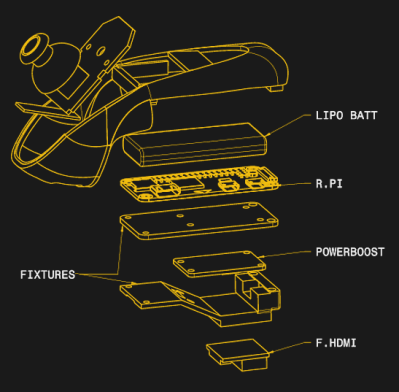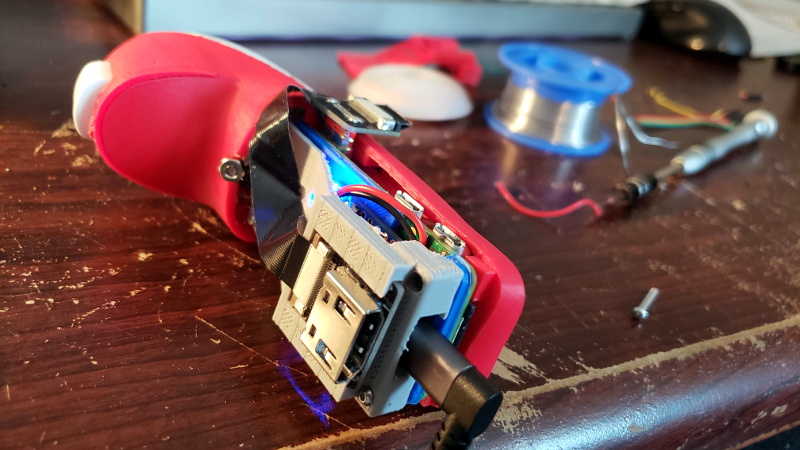The Wii controller will likely go down in history as the hacker’s favorite repurposed input device, and there’s no question that the Raspberry Pi is the community’s top pick in terms of Linux single board computers. So it should come as little surprise that somebody has finally given us the cross-over episode that the hacking community deserves: the PiChuk, a Pi Zero inside of Nintendo’s motion-sensing “nunchuk”.
 Veterans of Wii Sports might be wondering how the hero of our story, a hacker by the name of [keycaps], managed to pull off such a feat. The Pi Zero is small, but it’s not that small. The trick is that the case of the nunchuk has been extended by way of a new 3D printed bottom half.
Veterans of Wii Sports might be wondering how the hero of our story, a hacker by the name of [keycaps], managed to pull off such a feat. The Pi Zero is small, but it’s not that small. The trick is that the case of the nunchuk has been extended by way of a new 3D printed bottom half.
There’s more than just a Pi Zero along for the ride, as well. [keycaps] has manged to sneak in a 750 mAh LiPo and an Adafruit Powerboost, making the device a completely self-contained system. Interestingly, the original nunchuk PCB remains more or less untouched, with just a couple of wires connected to the Pi’s GPIO ports so it can read the button and stick states over I2C.
We know you’re wondering why [keycaps] went through the trouble of breaking out the HDMI port on the bottom. It turns out, the PiChuk is being used to drive a Vufine wearable display; think Google Glass, but without the built-in computing power. The analog stick and motion sensing capabilities of the controller should make for a very natural input scheme, as far as wearable computers go.
So not only could the PiChuk make for an awesome wireless input device for your next project, it’s actually a pretty strong entry into the long line of wearable computing devices based on the Pi. Usually these have included a DIY version of the distinctive Google Glass display, but offloading that onto a commercially available version is certainly a lot easier.

















you can play some serious wiiBowling with that
Getting to the point where someone can cosplay as a “gargoyle” from “Snow Crash” and have all the tech strapped onto their body be functional.
The hardware? We’re already at that point. The gargoyle setups shown in the book could be covered by little more than a cellphone for connectivity, and low-end SBC’s for camera, display, and IO. The VuFine being mentioned as the target system above has a model for $99.
The big holdup is software, for the most part. Facial recognition and database tie-ins continue to thankfully lag behind science fiction. However, if your vendor were, say, the Chinese government, and they REALLY wanted you to be able to do the stuff shown in Snow Crash, they could. They have the databases and access, so talk to them I guess.
FWIW, if you want a simple yes/no breakpoint for “can this into Snow Crash”, you could base your decision on whether your wearable computer can run Google Earth and a Voice Assistant. That’s most of what Hiro was doing with his. (Google Earth was developed by Keystone explicitly in order to bring “Earth” from the book into the real world.)